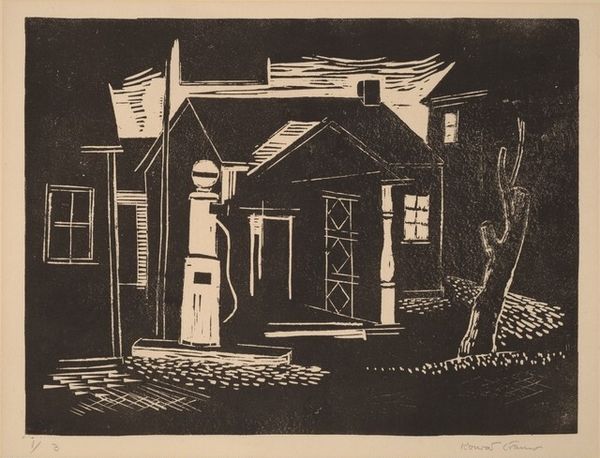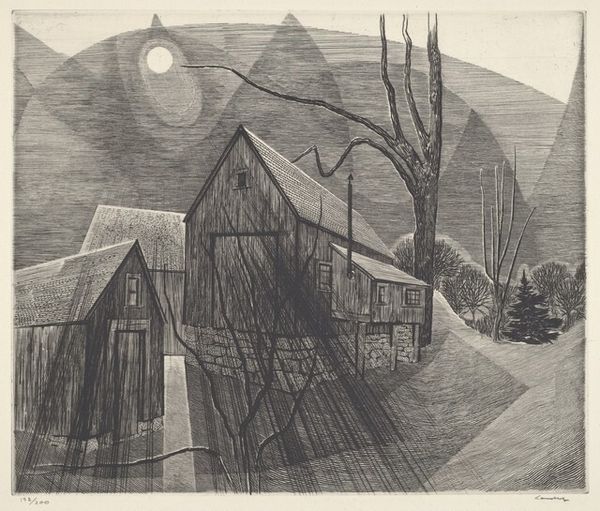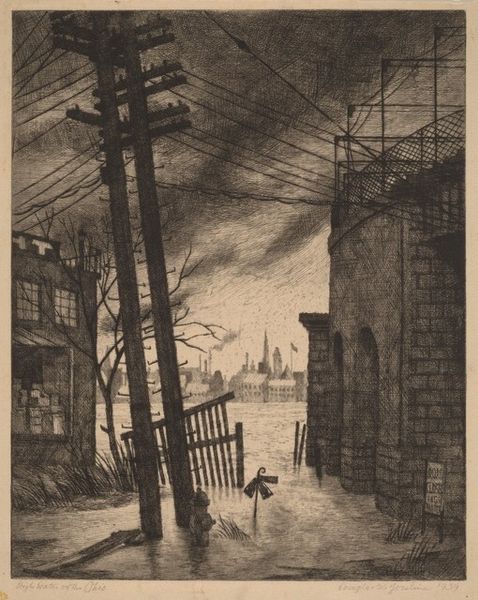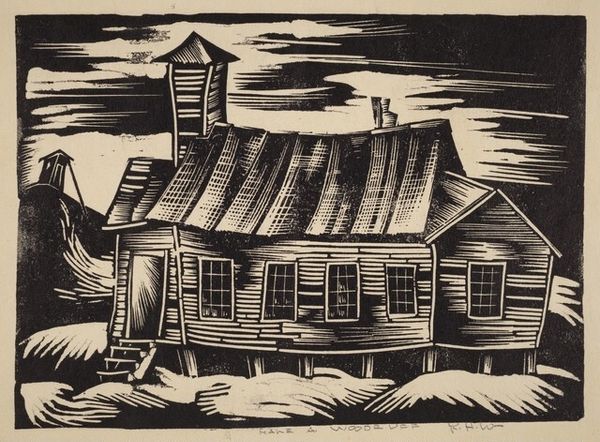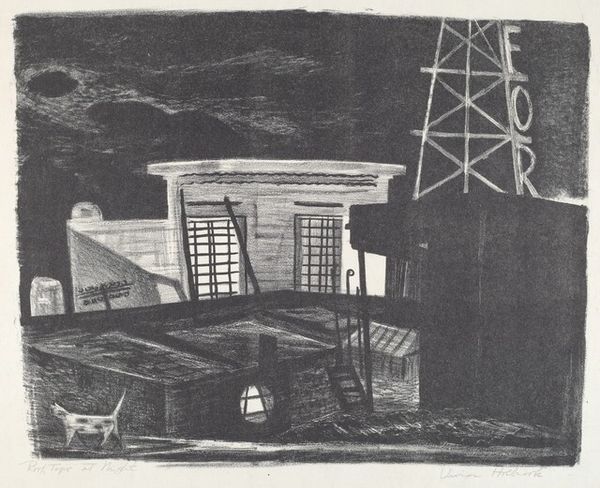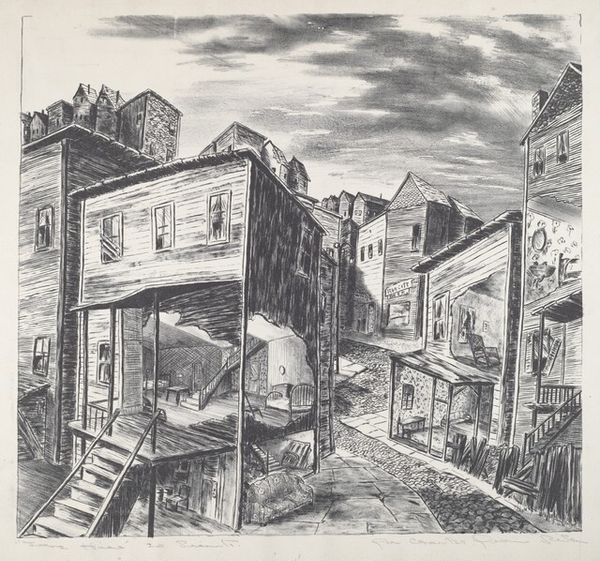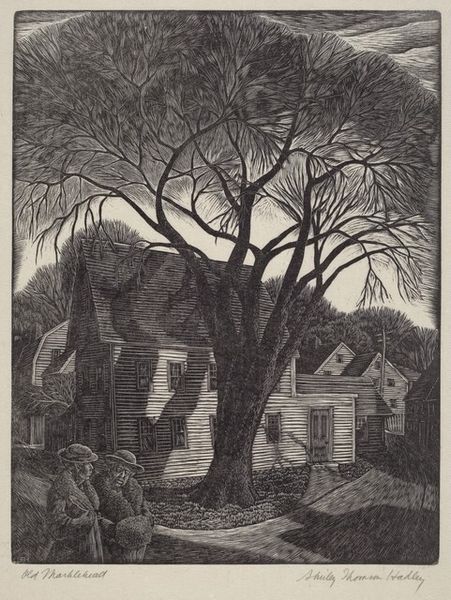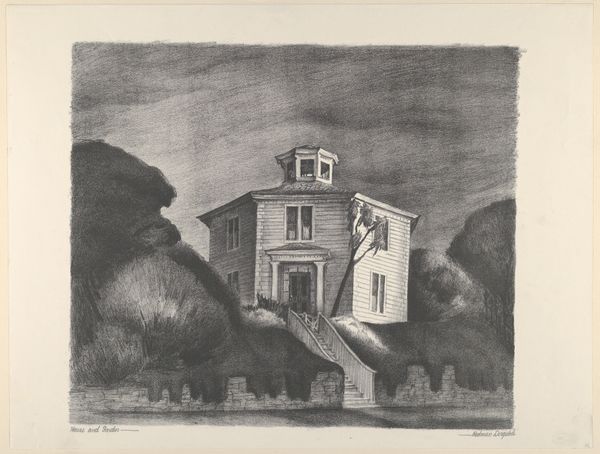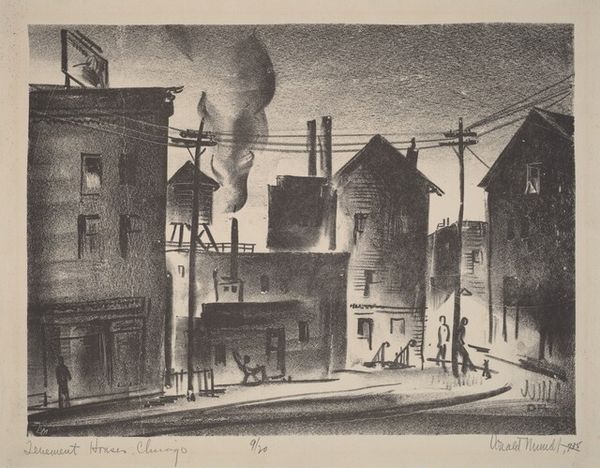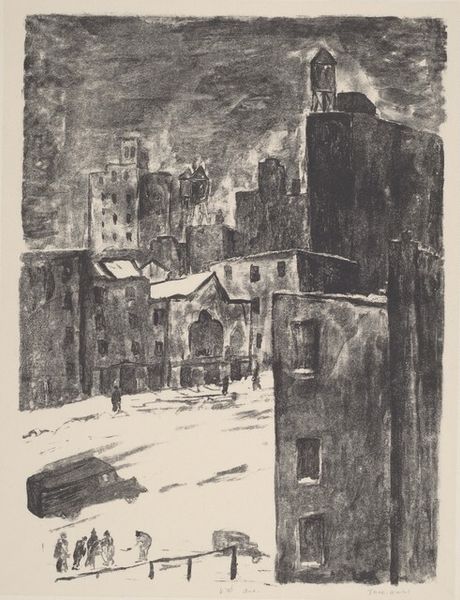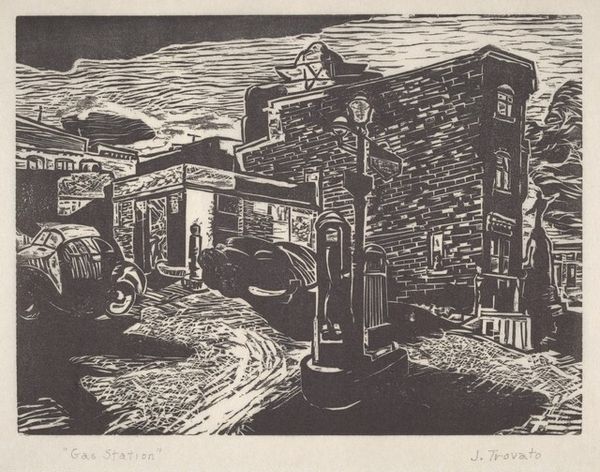
drawing, print, etching, graphite
#
drawing
# print
#
etching
#
pencil sketch
#
pencil drawing
#
graphite
#
cityscape
#
realism
Dimensions: stone: --- x 287 mm image: 131 x 248 mm sheet: 240 x 302 mm
Copyright: National Gallery of Art: CC0 1.0
Editor: This is Donald Mundt's etching, "Gas House-Chicago," from around 1934 or 1935. The printmaking process creates a strong contrast in the black and white tones that makes this industrial cityscape feel simultaneously solid and haunting. What's your take on it? Curator: Well, seeing this etching through a historical lens, I'm immediately struck by how Mundt presents industry. Does it strike you as celebratory or critical? Editor: I think it is neither, it simply depicts the reality of an industrialized neighborhood during this period, particularly amidst the Great Depression. I am more curious how a specific place—a neighborhood of Chicago—became the subject for this kind of realistic depiction. Curator: Exactly! And this is key to understanding Mundt’s social commentary. Consider how the Art Institute of Chicago and other institutions actively promoted regionalist art during the Depression, supporting artists who depicted everyday life and the American landscape. By portraying the grittiness of Chicago's industrial landscape, Mundt aligns himself with this broader movement but focuses more acutely on its urban manifestation. Also, the work itself is a print which democratizes art in an interesting way. Editor: So, is Mundt participating in a form of social documentation through his artistic practice? Curator: Precisely. He's documenting the visual culture of a specific social stratum and also grappling with how these communities shape identity in industrial urban areas. Consider also that this work is number one out of a series of 15; maybe the artist saw this depiction as highly desirable for artistic circles to acquire. How might it compare with the photography of the Farm Security Administration? Editor: This helps contextualize the social role of art during that time. Seeing it as more than just a landscape shifts the meaning considerably. I'll be taking that away!
Comments
No comments
Be the first to comment and join the conversation on the ultimate creative platform.
